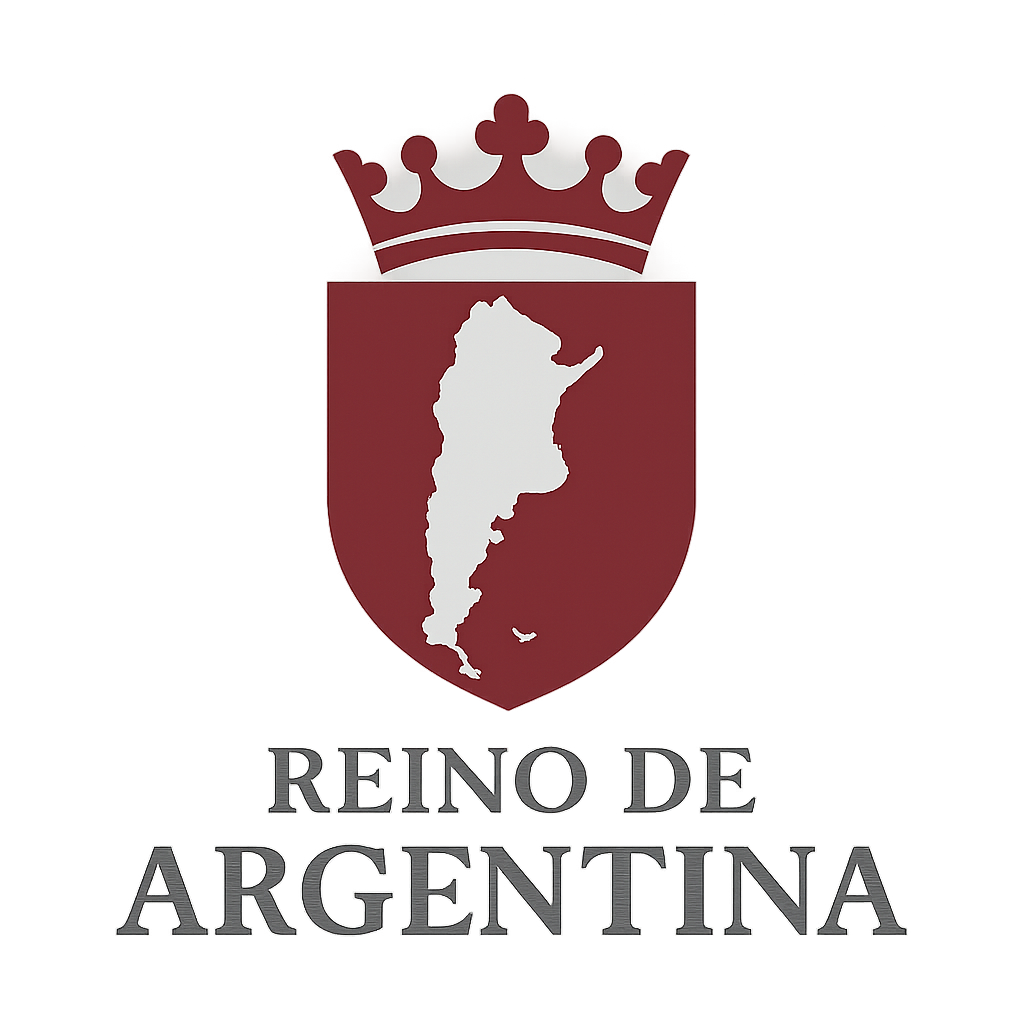♛ Duchy of Province of Buenos Aires
The plural heart of the Kingdom of Argentina
Gateway to a nation of nations
The Principality Province of Buenos Aires is not only the largest and most populated of the Kingdom of Argentina — it is also its greatest mirror. A land of contrasts, migrations, and foundational symbols, Buenos Aires synthesizes the cultural, economic, and human complexity of the entire country like no other principality.
From the shores of the Río de la Plata to the southern sierras, from the fertile Pampas to the Atlantic coast, this principality offers a diversity that defies simplification. Within it coexist major urban centers, centuries-old agricultural towns, natural reserves, industrial enclaves, and a history rich in nuance, conflict, and convergence.
Here begins the journey through the Kingdom of Argentina — in a territory that pulses with a force drawn from both past and future.
Geography, landscapes, and nature
The Principality Province of Buenos Aires spans more than 300,000 km², making it the largest principality in the Kingdom (excluding the southern Antarctic region). Its landscape is dominated by the Pampas plain, one of the most fertile regions on Earth, but it also includes:
-
The Atlantic coast, with beaches, sand dunes, and pine forests.
-
The Tandilia and Ventania mountain ranges, ancient low-relief geological formations.
-
Significant rivers and lagoons, such as the Salado, Samborombón, and Chascomús lagoon.
-
Wetlands and estuaries vital to regional biodiversity and ecological balance.
Protected areas include Otamendi Nature Reserve, Ernesto Tornquist Provincial Park, and the Southern Coastal Park, among others — all testimony to a natural heritage still struggling for conservation.
Deep historical roots
Before European colonization, the region was home to Indigenous peoples such as the Querandíes, Tehuelches, Pampas, and Mapuches, whose legacy persists in place names and cultural memory.
During colonial times, Buenos Aires became a focal point in the tensions between the Spanish Crown and emerging ideas of independence. Its port, ranches, and trade routes were key to the formation of the Argentine economy and national identity.
In the 19th century, it was at the center of civil wars and conflicts between federalists and centralists. Figures like Juan Manuel de Rosas left a profound, still controversial legacy. Later, the province welcomed massive waves of European immigrants who shaped its towns and cultural profile.
A vibrant and mestizo identity
Bonaerense identity defies categorization. It is gaucho and rock, immigrant and criollo, literature and carnival, tango and folk. Artists who were born or lived here include:
-
Jorge Luis Borges
-
María Elena Walsh
-
Ricardo Piglia
-
Charly García
-
Astor Piazzolla
Popular festivals abound: the Festival of Flowers in Escobar, the Immigrant Festival in Berisso, and the Dulce de Leche Festival in Cañuelas. Each celebration opens a window into the principality's human tapestry.
Its cuisine merges traditional Argentine barbecue with Italian, Spanish, and Central European influences. Wines from Tornquist and cheeses from Tandil complete a rich and expanding offering.
Territorial organization
The Principality Province of Buenos Aires is divided into over 130 Duchies, corresponding to its current administrative "partidos." Each duchy has its own distinct history, economy, and urban or rural profile.
Each duchy is further subdivided into counties, baronies, and seigneuries, based on population, size, or cultural importance.
Though it surrounds the Autonomous City of Buenos Aires, that city is not part of the principality; it is an independent entity within the Kingdom.
Notable duchies include:
-
Duchy of La Plata (seat of the Principality's government)
-
Duchy of General Pueyrredón
-
Duchy of Bahía Blanca
-
Duchy of Lomas de Zamora
-
Duchy of San Nicolás de los Arroyos
-
Duchy of Tandil
Economy and productivity
This principality is one of the economic engines of the Kingdom of Argentina. Its economy is diverse, with strong sectors such as:
-
Intensive agriculture: wheat, soy, corn, sunflower
-
Cattle ranching: home of the famous Argentine beef
-
Industry: especially in Greater Buenos Aires and Bahía Blanca
-
Logistics and financial services, benefiting from proximity to the national capital
-
Tourism: beaches (Mar del Plata, Pinamar), sierras, lagoons, rural and historic destinations
Additionally, the knowledge economy is on the rise, with technology hubs in La Plata, Tandil, and other cities.
Major cities
In addition to La Plata (the Principality's capital), major urban centers include:
-
Mar del Plata: Argentina's seaside gem and a growing industrial center
-
Bahía Blanca: strategic port in the southern zone
-
Tandil: a city of hills, food production, and cultural vibrancy
-
Pergamino: a key agricultural hub
-
Campana and Zárate: industrial and port cities
While Greater Buenos Aires is administratively outside the principality, it shares deep social, economic, and cultural ties.
Education, science, and culture
-
Major universities: National University of La Plata, National University of the South, National University of Mar del Plata
-
Museums and libraries: La Plata's Natural Science Museum, Tandil Central Library, MAR Museum in Mar del Plata
-
Scientific research centers affiliated with CONICET, agricultural institutes, tech parks, and marine research programs
Infrastructure and connectivity
-
Extensive highway and road networks
-
Several railway lines connecting north, west, and south
-
Key ports: Bahía Blanca, Mar del Plata, San Nicolás
-
Airports: La Plata, Mar del Plata, Bahía Blanca
-
Expanding rural internet access and digital connectivity
Tourism and visitor experiences
The Principality offers options for every type of traveler:
-
Coastal tourism: Pinamar, Villa Gesell, Mar Azul
-
Hill tourism: Tandil, Sierra de la Ventana
-
Rural and agro-tourism: San Antonio de Areco, Carlos Keen, Lobos
-
Historical tourism: Chascomús, Luján, San Miguel del Monte
-
Religious tourism: Basilica of Luján, Marian grotto in Mar del Plata
-
Wine routes in Buenos Aires — still emerging, but full of promise
Challenges and opportunities
Given its size and complexity, the Principality faces several pressing challenges:
-
Uncontrolled urbanization in the metropolitan region
-
Water and industrial pollution
-
Territorial inequalities between the north and south
-
Biodiversity and farmland protection
Yet, it also hosts numerous social innovations, including cooperatives, community networks, self-managed cultural centers, and alternative education initiatives.
The heart of the Kingdom
The Principality Province of Buenos Aires is, without a doubt, the plural and dynamic stage of the Kingdom of Argentina. Its history, vitality, and ability to hold complexity make it a key unit for understanding the country as a whole.
To know Buenos Aires from within — with all its contrasts and depth — is already to have a map to understand the entire Kingdom.

